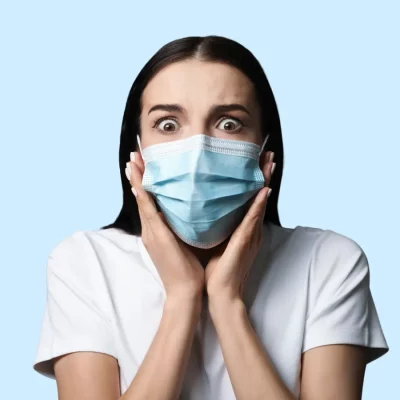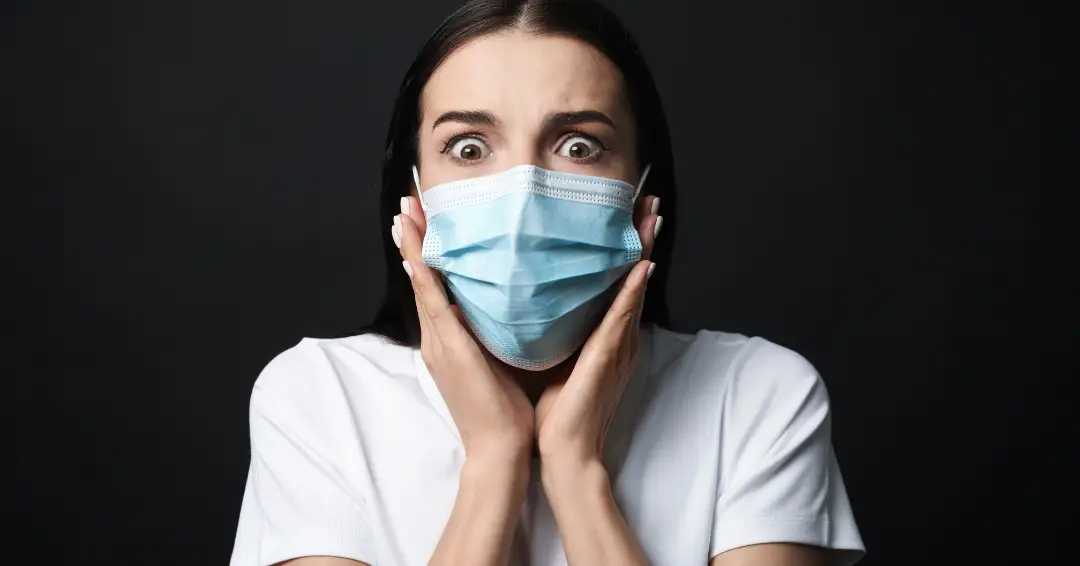Germaphobia, or the fear of germs, has become more prevalent since the onset of the COVID-19 pandemic. There has been a noticeable increase in anxiety related to germs. You might be asking, when does a healthy concern about germs become excessive? This is where germophobia comes into play.
Healthy vs unhealthy levels of fear
A person with a healthy level of concern takes reasonable precautions to reduce the risk of exposure to germs or illness.
For instance, you might wash your hands more often or avoid places where a lot of people are present.
Other preventive measures may include getting a seasonal flu shot or supporting the immune system with vitamins and supplements.
Overall, people typically take a lot more action but they don’t end up really thinking too much about it. There is no worry or negative emotion associated with it. They just do the behavior and then they move on to the next thing.
Versus someone who has mysophobia, more often called germaphobia, there’s a plethora of differences with three main red flags, which we will cover today.
This level of fear and concern puts a drastic limitation on what the person will do or where they will go.
What is a phobia?
We have all likely heard of one phobia or another at some point in our lives. Many of us have experienced those extreme and often irrational fears of things like spiders, clowns, or small spaces.
But, phobias are much more than just large fears without reason.
Phobias refer to a type of diagnosable anxiety disorder, involving the experience of extreme and irrational fears about situations, living things, places, or objects.
These fears can be related to anything and the person experiencing the phobia often shapes their life around this fear, making it so they never come across or interact with whatever induces this terror.
What is mysophobia or germaphobia?
As of 2023, approximately 9.1% of U.S. adults will experience a phobia during their lifetime, based on recent mental health data. Mysophobia, also known as germophobia, remains a significant concern, especially in the aftermath of the COVID-19 pandemic. Increased public health awareness has led to a rise in anxiety around cleanliness and germs, with many individuals developing heightened fears of contamination. This aligns with the broader trend of anxiety disorders affecting millions of people across the United States (ADAA)
Germaphobia is a fear that causes significant distress, triggered by microorganisms such as bacteria, viruses, and parasites.
Symptoms of mysophobia/germaphobia
Mysophobia/germaphobia, like most phobias, leads to emotional, behavioral, and physical symptoms, including but not limited to:
The most common emotional symptoms
- Intense fear of germs
- Anxiety or nervousness relating to exposure to germs
- Thoughts of exposure leading to negative consequences, such as illness
- Trying to distract yourself from thoughts about germs
- Feelings of powerlessness to control fear, even though fear is recognized as extreme or irrational
Behavioral symptoms
- Avoiding or removing oneself from situations involving germ exposure
- Excessive thoughts and preparation for germ-involved situations
Physical symptoms
- Rapid heartbeat
- Shortness of breath
- Becoming light-headed
- Shaking or tremors
- Restlessness
The 3 red flags of mysophobia/germaphobia
Now, the symptoms listed above are common side effects of germaphobia, yet they are also common side effects of simple fear which can happen only once.
Germaphobia can reach extreme levels. Here are three key signs that indicate intervention may be necessary:
- The person suffering will end up staying home a lot and will probably leave only if they really have to.
- They will eventually, hopefully, get to a place where they have this realization that this fear is irrational. Unfortunately, they will also feel like there is nothing that they can do to change it. They will feel completely powerless over it and will assume anxiety when they think about the germs, bacteria, or what have you.
- The third red flag would be establishing some form of routine. If they’re not able to successfully fulfill the routine or if the routine gets cut off, there’s going to be a huge spike of anxiety. They’re going to feel very out of control and will typically end up feeling worse off.
These red flags are serious and should be addressed. Please do not wait. Wellness Centers like Makin Wellness in Pennsylvania are readily available to help diagnose and treat issues such as this.
Germaphobia treatments and online therapy
Treatment for germaphobia typically includes exposure therapy and cognitive-behavioral therapy (CBT), common approaches for phobias.
Exposure therapy
Exposure therapy aims to gradually introduce anxiety-causing situations by creating a safe space in which to reduce anxiety and avoidance.
This type of therapy takes 3 forms:
- Imaginal exposure consists of mental confrontation of the anxiety inducer, involving mental picturing of the object or situation.
- In vivo exposure moves forward to the in-person confrontation of the fear.
- Virtual reality combines both imaginal and in vivo techniques.
Cognitive behavioral therapy
Cognitive behavioral therapy [CBT] is a form of psychotherapy that focuses on limiting distorted and disproportionate thinking.
The goal of CBT is to change how you respond to anxiety-triggering situations, replacing negative thoughts and behaviors with more balanced and constructive ones.
CBT consists of four steps:
- Assessment- analyzing and understanding causes of anxiety
- Cognitive restructuring- learning to identify thoughts responsible for anxiety
- Mindfulness training- learning to focus on the present
- Systematic exposure- Putting oneself into anxiety-causing situations while applying the mentioned learned mindfulness and cognitive skills.
Steps to lowering anxiety caused by germaphobia right now
The outbreak of coronavirus and the uncertainty surrounding it has made many of us feel anxious about our surroundings and current situation.
Here are some tips to help relieve some of the anxiety from germaphobia. These skills can also be helpful for obsessive-compulsive disorders.
- Limit exposure to information about Coronavirus News about COVID-19 can sometimes feel overwhelming. We hear good things. We hear bad things. It’s enough to drive anyone mad. Try taking a step back.
- Do things that mitigate anxiety We all have activities that act as sure ways to calm us down. It can be exercise, art, watching a movie, walking, talking, or whatever makes you feel relaxed.
- Indulge in distractions Make time for relaxing activities and don’t be afraid to branch out to discover new things. Anything that can distract you from the prior anxiety is a win. It will give your mind and body a moment to relax and remember how organic and healthy that feeling is.
- Keep up a daily routine
Maintaining a consistent daily routine can help provide stability and reduce anxiety by creating predictability in your life, allowing you to focus on positive activities rather than germ-related fears.
-
Monitor alcohol intake Alcohol always seems like a great idea when we are drinking it, yet it hinders our true ability to cope. Try limiting the number of drinks you consume and utilize other skills to deal when you are heavy with anxiety.
-
Consider online therapy If other methods seem to fail at helping with your anxiety and distress, counseling may be ideal for you.
If you or someone you know is experiencing heightened anxiety about germs, professional help is available to manage this fear.









